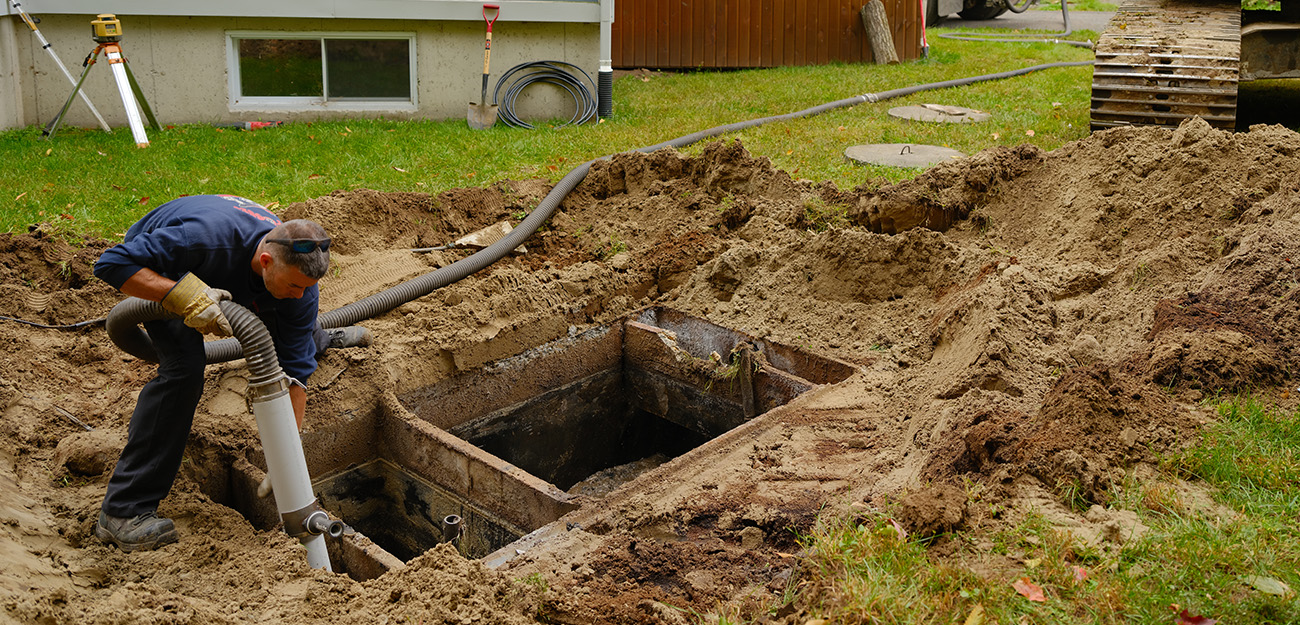Certain aspects of homeownership are hidden away until they need attention. One of the most important, yet overlooked aspect of a home is the septic system. It’s easy to believe that it will be able to do its job well without any maintenance. Like any system, septic tank have an estimated lifespan, and will eventually require replacement.

The cost of replacing a an septic tank is a significant financial burden for homeowners who are unprepared. There are many factors that contribute to the total cost, making it essential to understand what goes into budgeting for the replacement of a septic system.
Understanding the true cost to replace the tank requires considering many aspects beyond the obvious price of the tank. It’s not just an issue of taking out the old tank and putting in the new one. More than that, a variety of elements and services are a part of the total cost. Costs are accrued at every stage of the process, including getting permits, employing experts, and even excavation and construction.
The expense of replacing the system of septic, which includes the cost of installation for the leach field as well as its septic system as a whole, is a major factor. The price of a new tank is influenced by the size, the material, and the complexity of the installation. The cost can also be affected by the site of the property, local laws and soil conditions. It is essential to speak with experts from the septic system who can assess your specific requirements and give you an accurate estimation. They’ll also take into consideration the dimensions and layout of the leach field, to give you an accurate idea of how much the project will cost.
Aside from the tank itself, another substantial expense is the leachfield or drainfield. It plays a significant role in the treatment of wastewater and dispersal. It is vital to be cautious when replacing a damaged or defective leachfield, or one that is failing. It can have a significant impact on the cost of replacing a septic system. The size of the leachfield, its soil composition and the access are all factors that influence the price.
In addition to the physical expenses, homeowners must also take into consideration the intangible expenses that come with the replacement of their septic systems. This process can impact your everyday routine, and require you to temporarily leave your home or limit consumption of water during installation. Be aware of these inconveniences when planning your project since they could affect your routine and cause additional costs like accommodation or modifications to your routine.
Additionally, it’s important to be aware that regular maintenance and upkeep of your septic system are crucial for extending its life and limit the possibility of a premature replacement. Neglecting routine maintenance tasks could lead to bigger issues in the future which could include tank failure or damage to the drainfield. Integrating maintenance costs for septic systems in your budget is a smart investment that will save you money over the long term.
By now, you may have realized that determining the septic tank replacement cost is not a straightforward task. The cost of a replacement septic tank is determined by a number of factors. These include the dimensions, materials and complexity of installation as well as the state of your leach field. Furthermore, the area of your property as well as local rules can affect the overall cost. For an accurate cost estimate, you should consult with a professional who has experience in the repair of septic systems.
If you’re considering replacing your septic system, you could be amazed by the hidden costs. It’s important to know about these hidden costs before making an investment.
The hidden costs of septic systems replacement are:
The cost of inspections and permits. Before beginning work on the replacement of your septic tank, you will require a permit from your local authorities. These permits are expensive and you may have to pay for inspections.
Cost of excavation and removal. Before the new system can be installed, it is necessary to dismantle and remove the previous system. This could be a costly process, especially if your old system is located in an unaccessible area.
The expense for backfilling and gradeing. The hole left after the removal of the old system will have to backfilled and graded. It is essential that the drainage system drains properly.
Costs for landscaping. You may have to landscape the area after the installation of the new system in order to keep it neat and tidy. It can be costly in the event that you have to employ a professional landscaping company.
When you plan to replace your septic tank, it’s crucial to consider these cost-savings that aren’t obvious. You can avoid unpleasant surprises in the future by creating a plan in advance.
The decision to invest in environmentally friendly septic solutions is a smart choice for homeowners who have a tight budget. Not only are these cost-efficient alternatives to traditional septic systems but they also protect the environment by reducing runoff and reducing water pollution. These eco-friendly solutions are increasingly affordable and readily available. They’re the ideal choice for those looking to lower their carbon footprint without breaking the bank. Although there are initial investment costs associated with moving to an environmentally friendly system, the extra costs are more than made up for in long-term savings. Green isn’t just a trend, it’s a vital change in lifestyle that anyone ought to consider embracing if determined to protect the planet for generations to follow. By installing the right system, you can be sure that your home will run efficiently effectively and efficiently, as well as without requiring any maintenance.